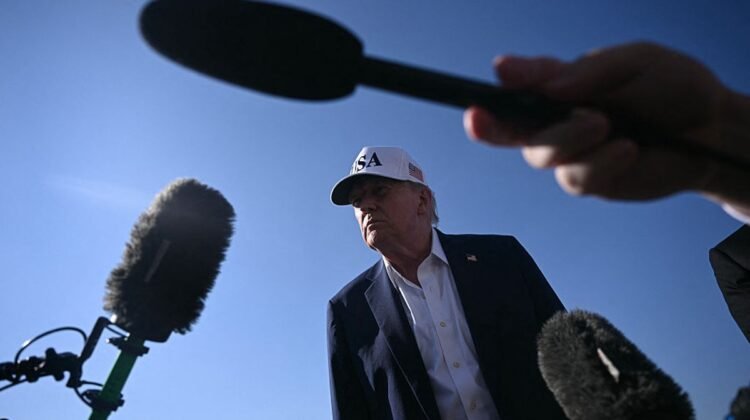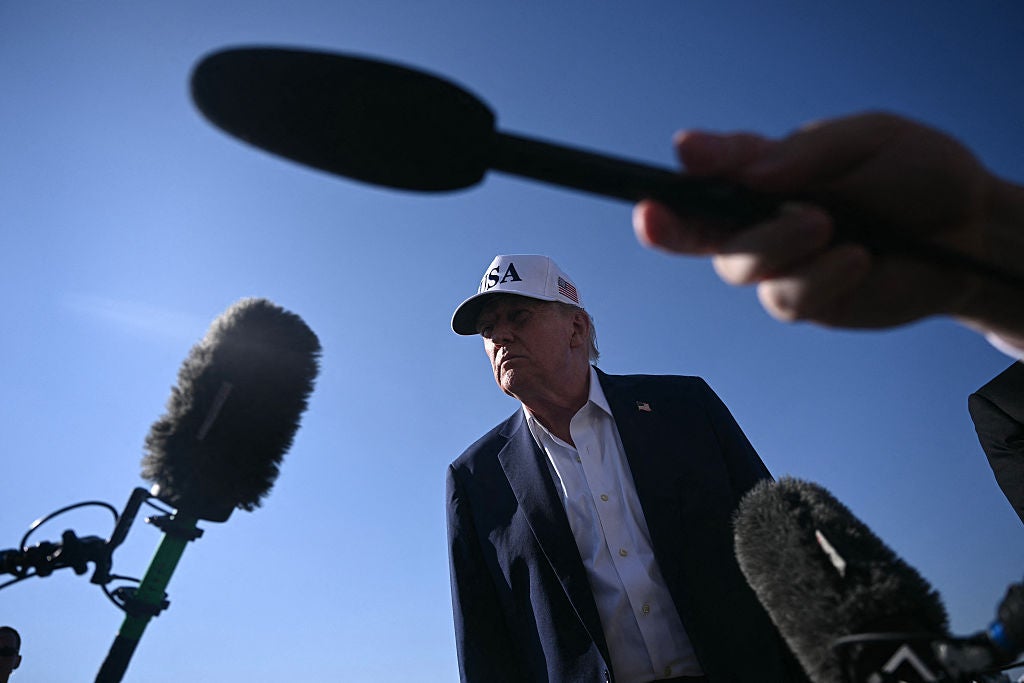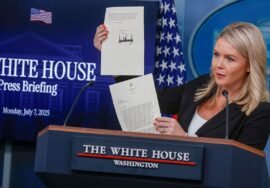
What is going on with Trump’s tariffs? All you need to know as trade deal deadline delayed again
New controversial trade tariffs announced earlier this year by Donald Trump for all nations exporting products to the US were due to come back into force this week. But that deadline has now been delayed — and there is suggestion it’s not really a deadline at all.
The UK rushed to the front of the queue to arrange a deal which came into effect at the end of June but few others have agreed terms with the world’s biggest economy.
So what’s the state of play now and what comes next? The Independent finds out.
What are Donald Trump’s trade tariffs and why were they introduced?
The US president’s second term has been defined by his push for tariffs, which he sees as the best way to redress a perceived imbalance between what the US spends on goods from other countries, and what they spend on those from the US.
That difference is the trade deficit, and Mr Trump feels one way to close that is to charge more for goods coming from each of those nations — that’s the tariff. The nations with smaller deficits get smaller tariffs, while the reverse is also true.
In theory that was the plan anyway, with the initial tariff amounts vaguely representing that — though the calculations to arrive at those tariff percentages was widely ridiculed by analysts and economists.
Also, it’s important to remember tariffs are not paid by the businesses doing the exporting or the country they are from. They are paid by the American consumers or companies buying and importing the products.
When is the trade tariff deadline?
After Mr Trump announced a 90-day pause to tariffs coming into effect back in April, they were due to come back into force on 9 July.
Just a few days before that deadline, however, the US have confirmed an extension until 1 August, giving more time to arrange trade deals with partners.
What happens when it expires?
Unfortunately Mr Trump wasn’t particularly clear about that.
When asked if the tariff rates come into effect on 9 July or 1 August, he replied “the tariffs are going to be the tariffs.” On Monday he also said 1 August was a “firm, but not 100 per cent firm” deadline.
Commerce secretary Howard Lutnick added: “Tariffs go into effect August 1. But the president is setting the rates and the deals right now.”
In effect, that seems to mean any nation without an agreement will get the tariff level they were originally assigned at the start of April.
“President Trump’s going to be sending letters to some of our trading partners saying that if you don’t move things along, then on August 1st, you will boomerang back to your April 2nd tariff level,” treasury secretary Scott Bessent told CNN.

Those letters are effectively the Trump administration sending notice to trading partners of the added costs of exporting to the US.
“They’ll range in value from maybe 60 or 70 percent tariffs to 10 and 20 percent tariffs,” Mr Trump said at the end of last week before the extension was announced. “We have more than 170 countries, and how many deals can you make? They’re very much more complicated.”
On Monday, it was confirmed 14 nations had been sent letters with new tariff rates.
What is the UK’s trade agreement with the US?
As of early May, there’s now an Economic Prosperity Deal (EPD) in place between the UK and the US, with the intent to promote trade
Most UK goods now have a 10 per cent levy on them when exported to the States, though there are exceptions, such as in the aerospace industry which has a zero tariff agreement under the terms of the EPD.
Vehicles are capped at 10 per cent for the first 100,000 imported into the US, rather than the flat rate 25 per cent applied elsewhere, while there are still discussions ongoing regarding steel and aluminium products and the pharmaceutical industry.
The goverment said on its website: “Thanks to the UK-US deal, the UK is the only country to be exempt from the global tariff of 50 per cent on steel and aluminium. As the prime minister and President Trump have again confirmed, we will continue go further and make progress towards 0 per cent tariffs on core steel products as agreed.”
Small UK businesses are already facing an average £17,000 hit due to tariff uncertainty knock-on effects.
Who else has an agreement?
So far, Vietnam are the only other nation to have agreed a deal hough there is a truce agreement of sorts with China, with details of the agreement scarce but both sides previously saying an arrangement is in place.
The EU is still in discussions over a deal, with talks reportedly going well over a basic framework, but with some in Brussels demanding key exemptions to certain industries.
Senior figures in the EU have previously threatened retaliatory tariffs on products if the US implement their own higher rate. The EU-US trade relationship was valued at $2tn (£1.47tn) in 2024.
Mr Trump recently alluded to frustration in talks with Japan, particularly over the Asian nation buying more American vehicles and rice. Japan’s prime minister Shigeru Ishiba said they would not “easily compromise” in talks. In a letter sent on Monday, Japan’s tariff rate was set at 25 per cent. South Korea received the same level, while Thailand, Cambodia, Laos and Myanmar were those who received the highest rates, at 36 or 40 per cent.
Meanwhile, the Brics bloc (which includes Russia, South Africa and the UAE among other nations) has been threatened with an extra 10 per cent tariff with “no exceptions”, as the US president posted on social media.
What is the wider economic impact of Trump’s trade war?
When the tariffs were initially announced, the biggest initial reaction came in plummeting stock markets which saw $2.5tn (£1.8tn) wiped off the collective value of US companies. Later, bond markets also dropped and caused the about-face from the US president.
This time around there’s still an expectation of heightened volatility, but perhaps not to the same extent given we know the tariff limits, the date being pushed back once more and key trading partners still appearing close to some resolutions.

“We now have some clarity on how the system will work. More countries are expected to confirm trade deals in the coming days, and extensions are possible for countries where negotiations are deemed to be going well,” said Dan Coatsworth, investment analyst at AJ Bell.
“In theory, this clarity – albeit still slightly murky rather than crystal clear – should have had a positive reception from investors as the hard deadline has effectively been pushed back three weeks.
“What’s troubling investors is Trump potentially moving the goalposts yet again. He has form in constantly coming up with new terms and conditions and has now threatened an extra 10 per cent tariff on countries who align themselves with ‘anti-American policies’ of BRICS nations.
“He also suggests some tariffs could reach up to 70 per cent, greater than the previous maximum amount on the Liberation Day menu. Investors would much prefer one set of rules and for the Trump administration to stick to them.”





